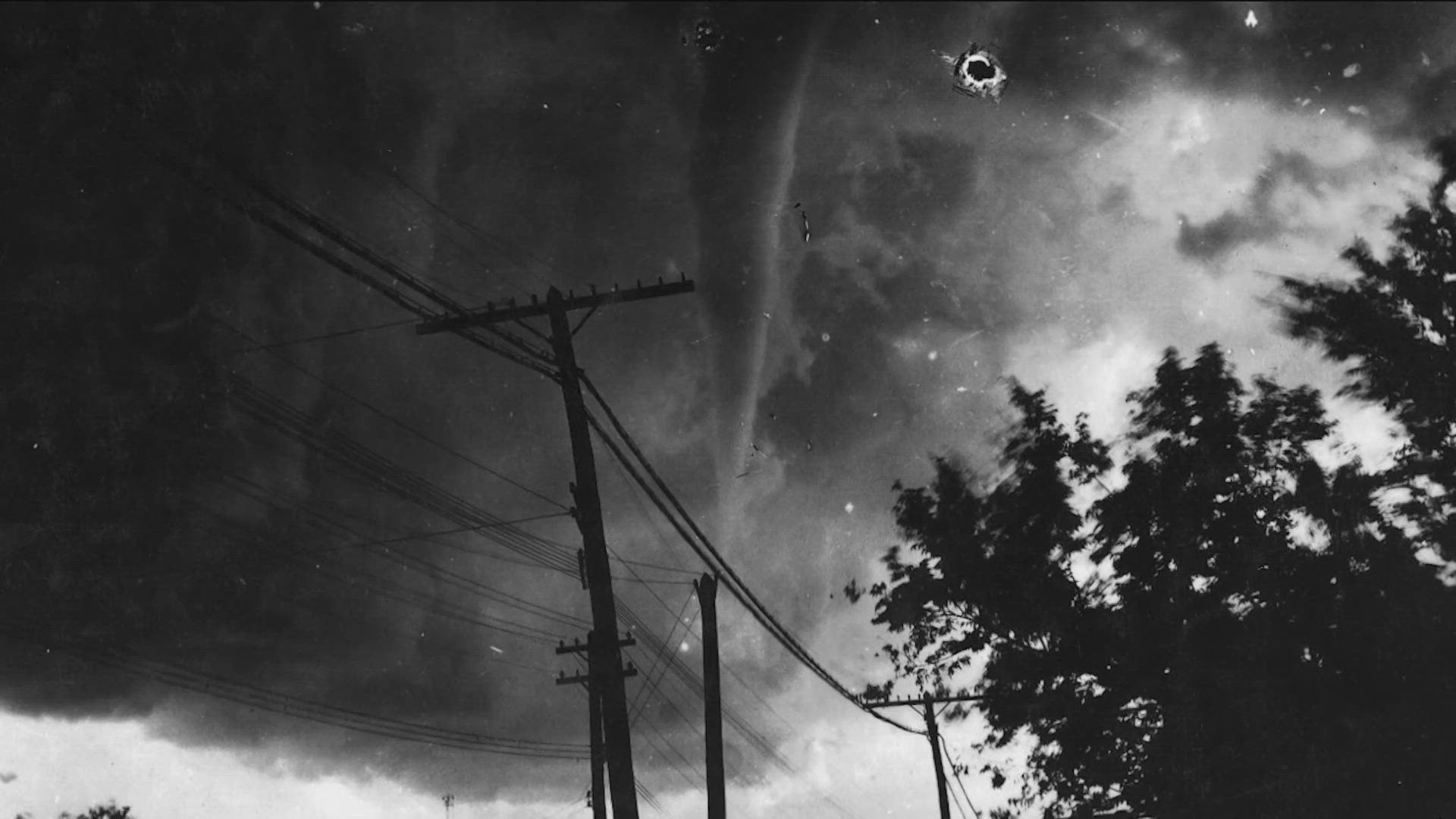AUSTIN, Texas — Sunrise, late spring 1922.
It's the start of another warm, humid day in May in Austin. From his office on the University of Texas campus, the city's weather observer notes that the morning is becoming exceedingly warm.
The barometer at the university shows that the air pressure was dropping, a sign of a potential storm. By mid-afternoon, the sky grows so dark that lights in the old main building are turned on.
Then, to the northwest of UT's campus, students and faculty watch as a tornado snakes out of the clouds. Soon the whole town is aware of it.
The tornado touches the ground in West Austin, damaging the Texas Blind and Deaf Institute and destroying homes. Still, the worst is yet to come.
A second tornado appears east of downtown, touching down at the Texas State Cemetery, then moves across the Colorado River south to St. Edwards University, where a student dies and many are hurt when a dorm collapses. Finally, to Oak Hill, where a family of six dies in their farm home.
The next day, the Austin American-Statesman tells the story of a city caught in the grips of the two twisters. Of the homes destroyed. Of the lives lost. Of the relief efforts for the homeless. And ironically, stories of tragedy alongside advertisements promoting tornado insurance.
The twin tornadoes of May 4, 1922: a tragic day in the life of the Capital City. And a reminder that, then and now, Texas weather in May could turn violent, fast.
RELATED: The science behind Texas-sized hail

